- News
- Reviews
- Bikes
- Accessories
- Accessories - misc
- Computer mounts
- Bags
- Bar ends
- Bike bags & cases
- Bottle cages
- Bottles
- Cameras
- Car racks
- Child seats
- Computers
- Glasses
- GPS units
- Helmets
- Lights - front
- Lights - rear
- Lights - sets
- Locks
- Mirrors
- Mudguards
- Racks
- Pumps & CO2 inflators
- Puncture kits
- Reflectives
- Smart watches
- Stands and racks
- Trailers
- Clothing
- Components
- Bar tape & grips
- Bottom brackets
- Brake & gear cables
- Brake & STI levers
- Brake pads & spares
- Brakes
- Cassettes & freewheels
- Chains
- Chainsets & chainrings
- Derailleurs - front
- Derailleurs - rear
- Forks
- Gear levers & shifters
- Groupsets
- Handlebars & extensions
- Headsets
- Hubs
- Inner tubes
- Pedals
- Quick releases & skewers
- Saddles
- Seatposts
- Stems
- Wheels
- Tyres
- Health, fitness and nutrition
- Tools and workshop
- Miscellaneous
- Tubeless valves
- Buyers Guides
- Features
- Forum
- Recommends
- Podcast
feature
8 reasons not to get disc brakes — find out the hassles before you switch
Disc brakes have become an increasingly important part of the road bike world over the past few years, but while the benefits of disc brakes are well documented, they bring with them challenges and problems too.
Here are some of the issues that we've experienced and heard about.
1 Disc brakes add weight
The all-up weight of a disc brake bike is higher than that of a rim brake bike.
Levers, brake callipers, hoses, fluid and rotors weigh more than an equivalent rim brake setup. Manufacturers often try to minimise the difference but don't forget that disc brake hubs are heavier too, and disc brake wheels are often built up with more spokes of a wider gauge, although the lack of a brake track means that disc-specific rims are generally lighter. The thru axles that are used with many disc systems are heavier than quick release skewers.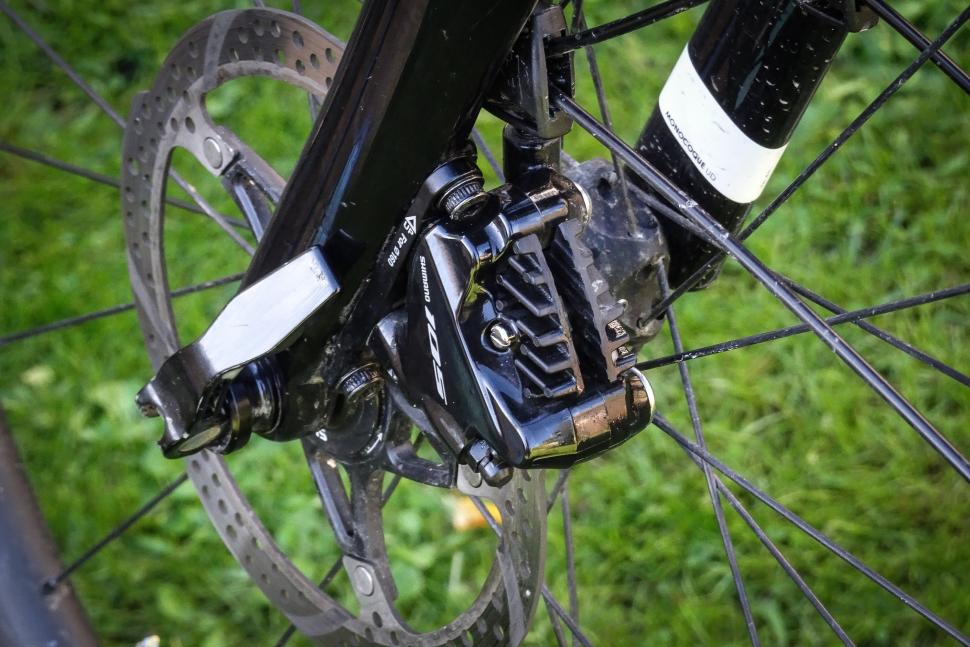
Read Everything You Need To Know About Disc Brakes
The weight difference isn't huge but it can often be around a pound over the whole bike when everything is taken into account.
2 Disc brake rub can be an issue
Early disc-equipped bikes borrowed the 74mm post mount standard from mountain bikes, where the brake calliper is simply bolted directly onto the frame or fork and adapters are used to accommodate different rotor sizes.
To try and improve the appearance of discs on road bikes, Shimano introduced its flat mount system. It’s an open standard that has been quickly adopted by other disc brake manufacturers. The vast majority of new disc brake road bikes are flat mount.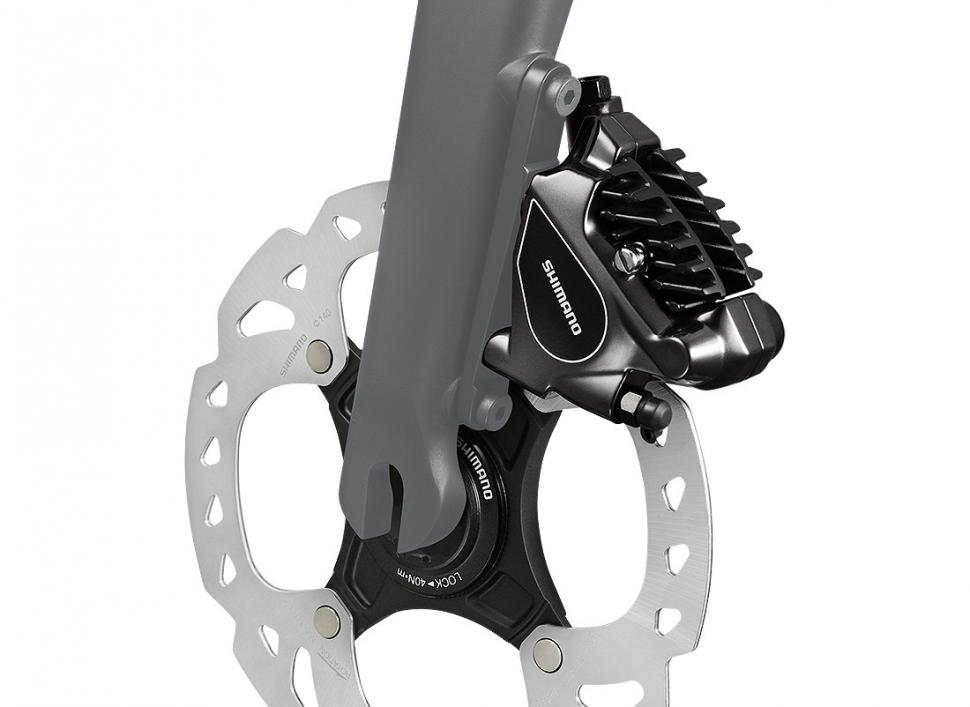
“[Flat mount offers a] smaller and more compact interface with the frame/fork for improved integration, reduced weight and better tool access for easier adjustment,” Shimano told road.cc.
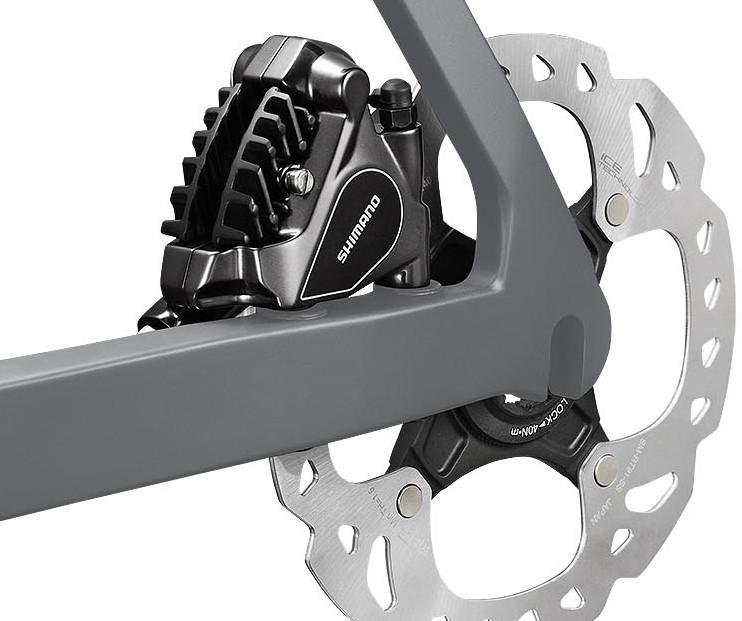
There’s no doubt flat mount disc callipers are smaller, better looking and lighter than the bulkier post mount callipers. The actual calliper mechanism is identical and there are no changes to the way the hose connects and the brake pads are installed. The key difference is in the way the calliper is mounted to the frame.
Where post mount callipers are bolted from above directly into the frame and fork, flat mount callipers sit flush with the frame and fork and the bolts are threaded in from below and directly into the calliper, pulling it down onto the frame. At the front, the calliper is fixed to a thin adapter which is bolted to the fork.
Depending on frame design and disc rotor size, post mount often needs a large and ugly adapter to provide the correct spacing over the rotor. On mountain bikes with many different frame designs and more rotor sizes in use, that versatility is a good thing, but the road market leans towards just 140mm and 160mm rotor sizes, for which flat mount has been designed.
We’ve had mostly good experiences with flat mount on the disc-equipped bikes we’ve tested, but there have been a couple of incidents of brake rub, and there's nothing more annoying.
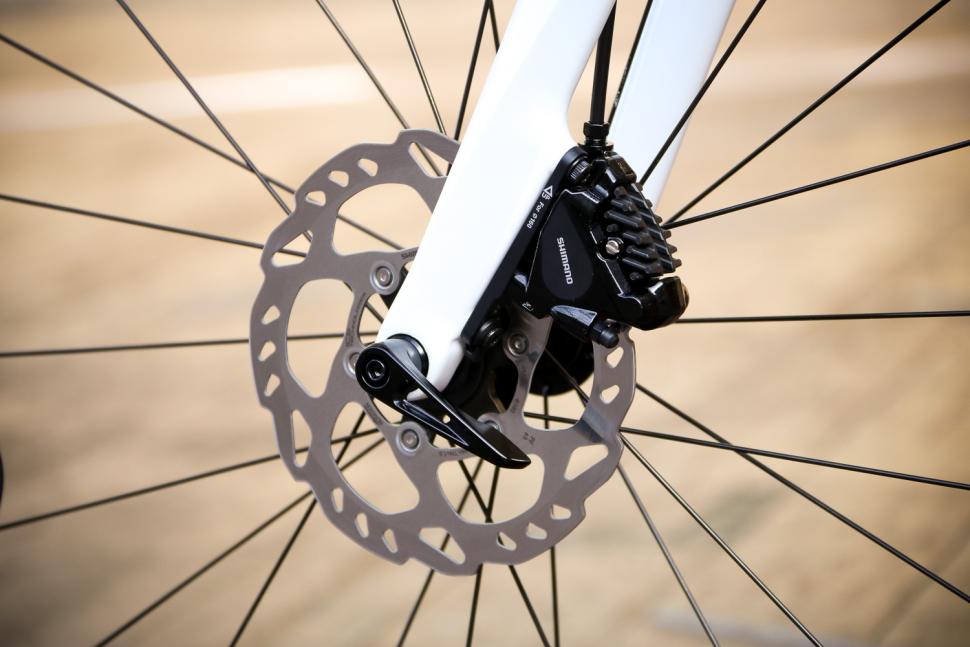
We asked Shimano about this problem and it told us that cleanly faced mounts are very important.
“As with post mount, a plane contact area (facing) always helps, as does the size of the disc (smaller is better). Centerlock rotors on good stable axle bearings (compared to 6-bolt rotors on lightweight hub axles) also help with alignment. The construction of the fork is also important (stiffness balance left/right),” said Shimano.
You'd hope a frame or fork manufacturer would make sure that the contact area was right, but in our experience this isn’t always the case.
Facing tools ensure the brake mounts on the frame and fork are smooth and level and provide perfect alignment. They're expensive and not really suitable for most home mechanics, although all good bike shops should be able to help you out here. Park Took does an adapter for its DT-5.2 Disc Brake Mount Facing Set and you can see it in action in this video.
The other solution to disc brake rub is to adjust the calliper on the frame/fork. With post mount it’s relatively easy: just slacken off the bolts, pull the brake lever and tighten the bolts to centre the calliper over the rotor.
“The range of adjustment for flat mount is the same as for post mount," says Shimano. "The difference is that the side-to-side adjustment is no longer on the calliper but in the slot hole instead. Shimano recommends that this hole is 4 x 5.2mm (+/- 0.1mm) but sometimes manufacturers don’t follow these recommendations. For the front calliper the adjustment is in the adaptor plate with the same hole dimensions.”
Not all manufacturers are adhering to the requirements as closely as they should. In many cases, the flat mount range of adjustment appears to be less than in post mount systems. We like flat mount but it does mean you are at the mercy of bike companies ensuring the mounts are manufactured correctly.
3 Disc brakes affect aerodynamics
Like any other external component, disc brakes affect aerodynamics. Some manufacturers have stated that the rim brake version of a particular bike is more aerodynamically efficient than the disc brake model, but it's not as simple as saying that rim brakes are always more aero.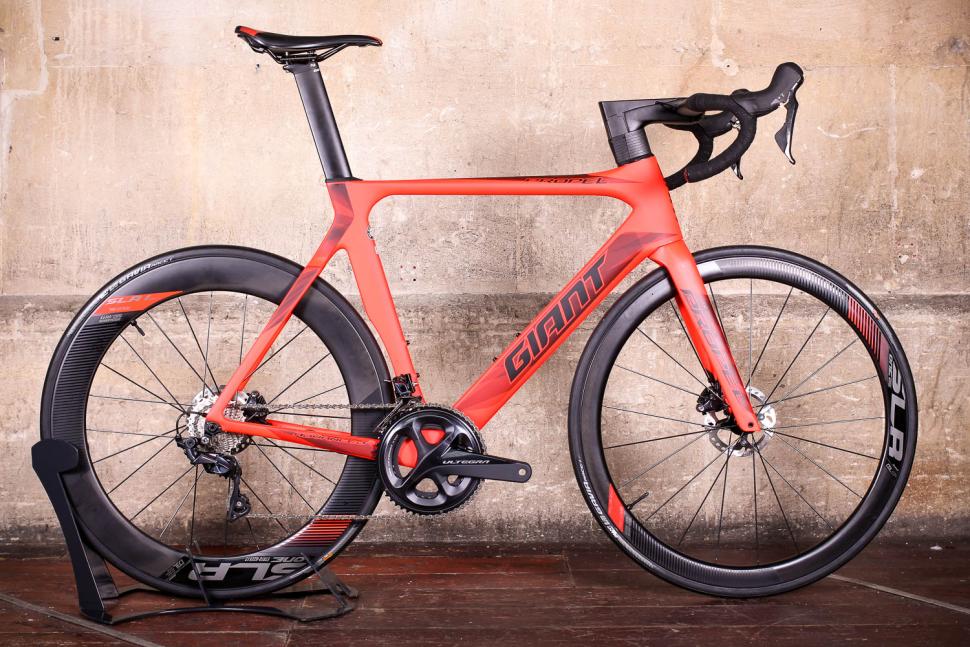
When Giant revealed its Propel Disc in 2017, for example, it said, "Engineers found that, with proper integration, a disc-brake design can actually improve aero performance compared to rim-brake configurations.
“This is because the location of traditional callipers (either in front or behind the fork crown/ legs) creates 'dirty' air'. Opening up the fork crown area (by placing the disc-brake callipers down at the hub) means that the air hitting the new disc-brake calliper has already been disrupted by the leading edge of the tyre/wheel. This effect is further enhanced by an asymmetric fork that helps smooth out airflow over the calliper.”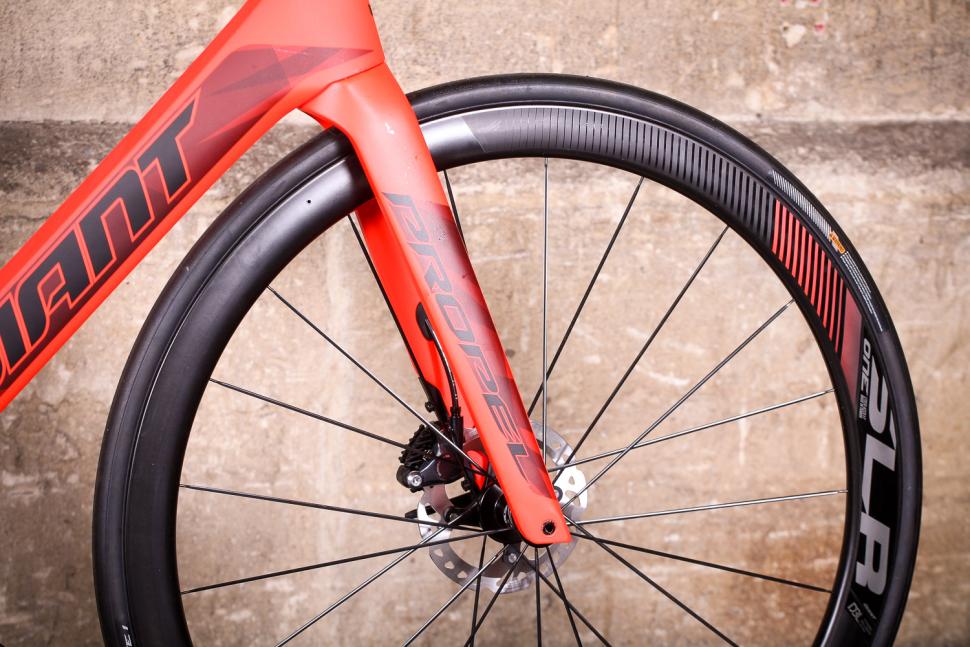
A handful of new aero road bikes, like the Cannondale SystemSix and 2019 Specialized Venge, are disc brake-only.
4 Choosing pads is a minefield
Switch to a disc brake bike and you'll eventually have to choose new pads... and that's a minefield.
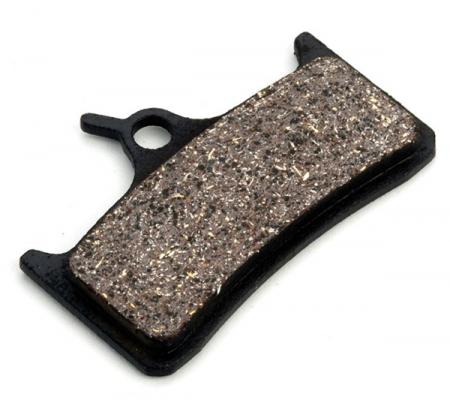
All pads are made by mixing various powdered additives with a binding agent and then squashing it all together at high heat and pressure to form a solid block on the backing pad. What's in the mix of powders has a major effect on the pad's properties.
Most new bikes come fitted with resin pads. They're made from non-metallic additives such as rubber, glass, carbon and Kevlar to provide an all-around pad that works for most people but isn't very durable under hard use.
Find out more about disc brake pads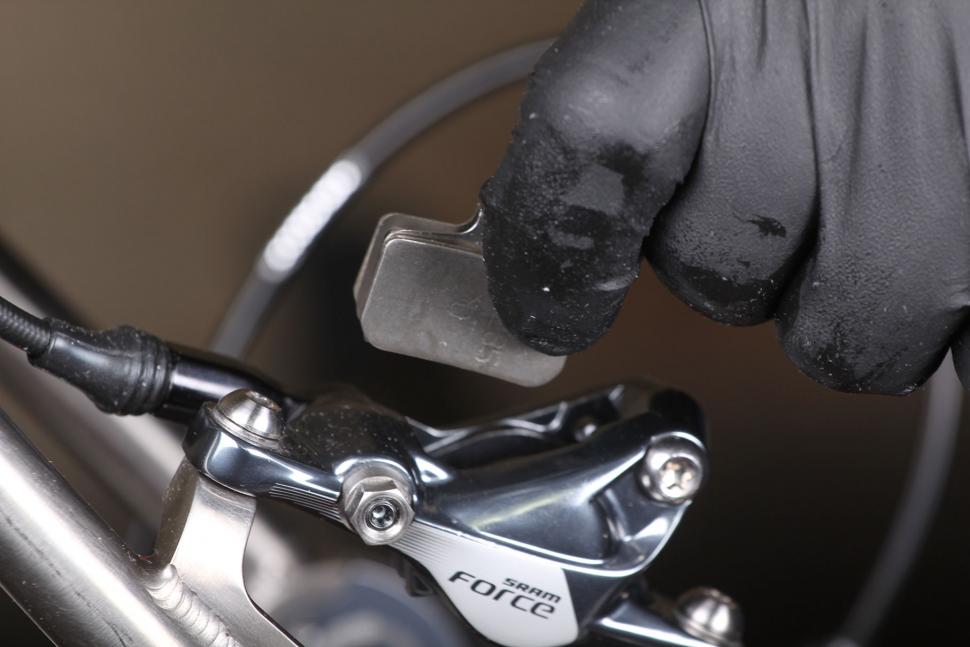
If you live anywhere hilly and/or ride in all weathers then you're probably better off switching to more expensive but much longer lasting sintered pads. Also known as metallic brake pads, these use a very high proportion of metallic fillers such as copper, steel and iron. They provide strong, effective braking at high pad temperatures although their bite can be poor when they're cold and they'll wear out your rotors quicker than resin pads.
5 You need to bed in new brakes
New disc brake pads and rotors don't immediately perform to their full potential – they need bedding in first. This is a process that distributes pad material over the rotor to increase the friction, and maximises the contact area between the two surfaces.
Here's how to look after disc brakes to get the best performance out of them
Thankfully, bedding in is pretty straightforward. Here's SRAM's advice:
"Accelerate the bike to a moderate speed and then firmly apply the brakes until you are at walking speed. Repeat this process 20 times. Then accelerate the bike to a faster speed and apply the brakes until you are at walking speed. Repeat this process 10 times. It’s important that during this process you never come to a complete stop or lock up the wheels at any point."
This will improve the performance of your brakes massively and prepare them for normal riding.
6 Maintenance involves a new set of skills
Chances are that you know how to adjust rim brakes and swap the pads, and probably how to change the cables too. You might have been doing it since you were a kid. Depending on your cycling background, disc brake maintenance might be entirely new to you.
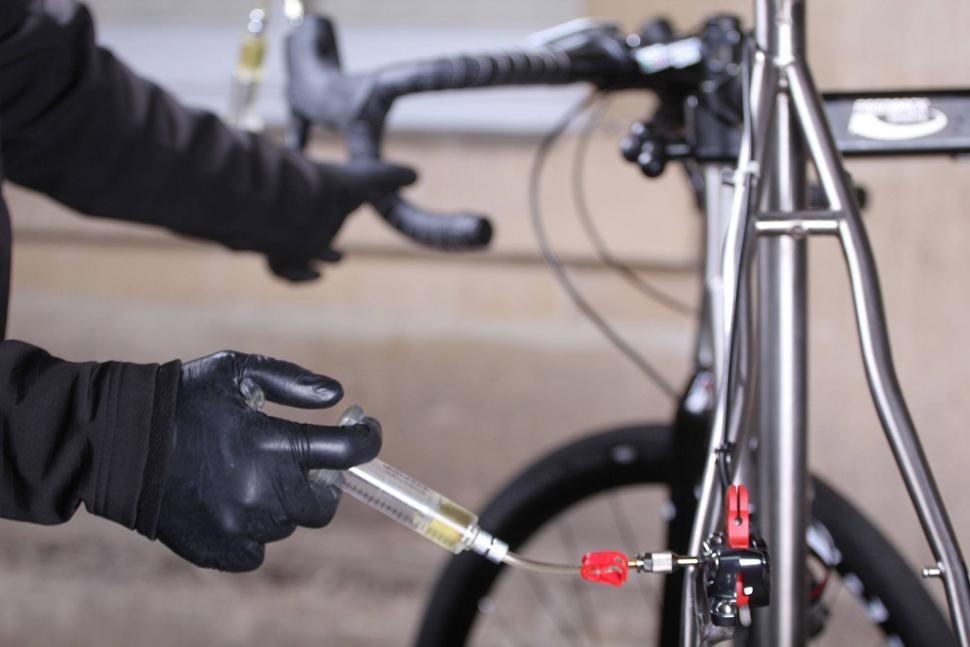 One issue you could encounter with hydraulic disc brakes is a soft and mushy feel because of air in the system. This requires bleeding and means either a trip to a bike shop or shelling out on a bleed kit. Each manufacturer has its own bleed kit. Shimano and SRAM, for example, use different techniques and fluid.
One issue you could encounter with hydraulic disc brakes is a soft and mushy feel because of air in the system. This requires bleeding and means either a trip to a bike shop or shelling out on a bleed kit. Each manufacturer has its own bleed kit. Shimano and SRAM, for example, use different techniques and fluid.
Bleeding a hydraulic disc brake system isn't the most onerous of tasks but you will need to get the hang of it while following a guide or watching one of our videos.
7 They can squeal!
It's true that rim brakes can squeal but we reckon that disc brakes are worse offenders.
The most common cause of disc brakes squealing is contamination of the rotor or pads. You have to be careful when using spray lubricants on a bicycle with disc brakes, or avoid them altogether.
Find out how to stop your brakes squealing
“Cleaning your rotors regularly with a specific (oil-free) disc brake degreaser is a good way to avoid squealing brakes," says Shimano. "Cleaning your pads too can help quieten things down — you can try some sandpaper or grinding the pads — but if the grease has soaked through the pad, you might need to replace them. Don't use a degreaser or chemicals on brake pads, though.”
It’s harder to clean disc brake pads than rim brake pads, largely because you have to remove them from the bike in the first place.
What's the best way to clean disc brakes?
Squealing pads can also be a sign that the pads are worn out. It's a little more tricky to take a close look at disc brake pads than it is with rim brake pads, although taking the wheel out can make the task easier.
8 Rotors wear out... eventually
One of the advantages of disc brakes is that they don't wear out the rims of your posh carbon wheels, but don't forget that you will wear out the disc rotors. Thankfully, rotors aren't particularly expensive.
Different brands give different minimum thicknesses for their rotors (the figure is often printed on the rotors). Go beyond that limit and things become dangerous, so keep an eye on 'em.
Mat has been in cycling media since 1996, on titles including BikeRadar, Total Bike, Total Mountain Bike, What Mountain Bike and Mountain Biking UK, and he has been editor of 220 Triathlon and Cycling Plus. Mat has been road.cc technical editor for over a decade, testing bikes, fettling the latest kit, and trying out the most up-to-the-minute clothing. He has won his category in Ironman UK 70.3 and finished on the podium in both marathons he has run. Mat is a Cambridge graduate who did a post-grad in magazine journalism, and he is a winner of the Cycling Media Award for Specialist Online Writer. Now over 50, he's riding road and gravel bikes most days for fun and fitness rather than training for competitions.
Latest Comments
- CarlosFerreiro 2 sec ago
No mention of the design process for the cycle lane being looked at? The lane not being usable was identifed as a contributing factor to a fatal...
- hawkinspeter 6 min 19 sec ago
She's He's not my Queen King and certainly has no ownership of our language!
- bensynnock 58 min 8 sec ago
I see a car go through a red light at almost every single cycle at every single junction. ...
- chrisonabike 1 hour 56 min ago
Also don't forget - Sustrans are a charity *....
- chrisonabike 2 hours 8 min ago
Yes ... but (just due to the large numbers of people affected) this likely would only proceed in the UK at a very ... cautious ... pace....
- EK Spinner 2 hours 25 min ago
Arsehole in the van not with standing, how did they manage to get a risk assessment allowing a race (a group not a TT) group to be competing on ...
- RafaDy 2 hours 21 min ago
I think reviewer completely missed the point here trying to match bike's name with what it can do. Ribble is namin git's bike weirdly, the...
- Moist von Lipwig 5 hours 46 min ago
Bit of googling gone wrong in the article - the JAT is the Junction Assessment Tool, the Joint Approval Team appears to be a coutner terrorism...
- HKR 7 hours 1 min ago
Can't believe that child threw his bike on the floor at the end of that. Young people today have no respect... ;))
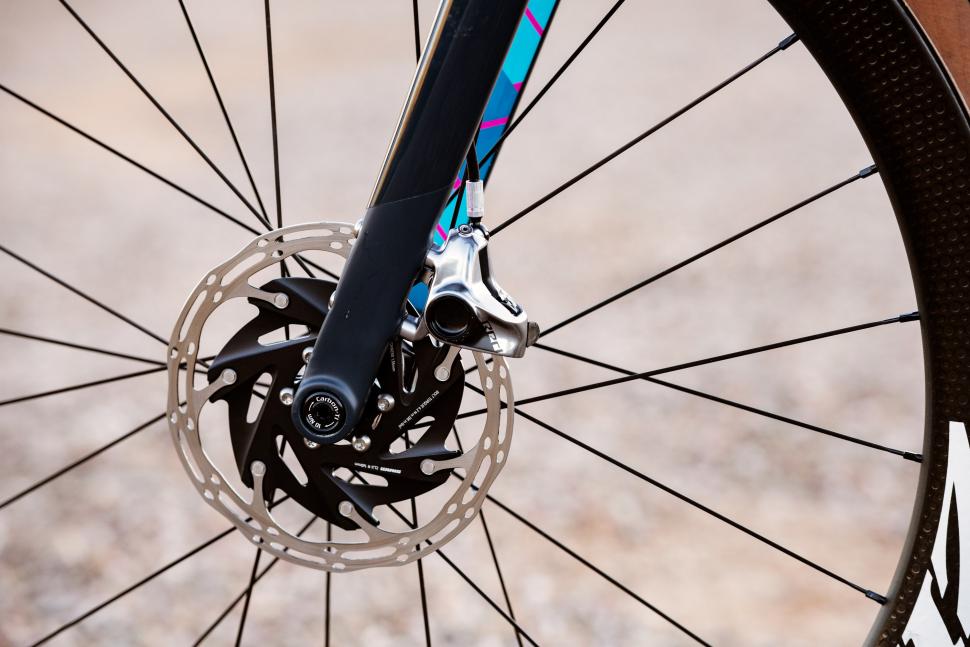
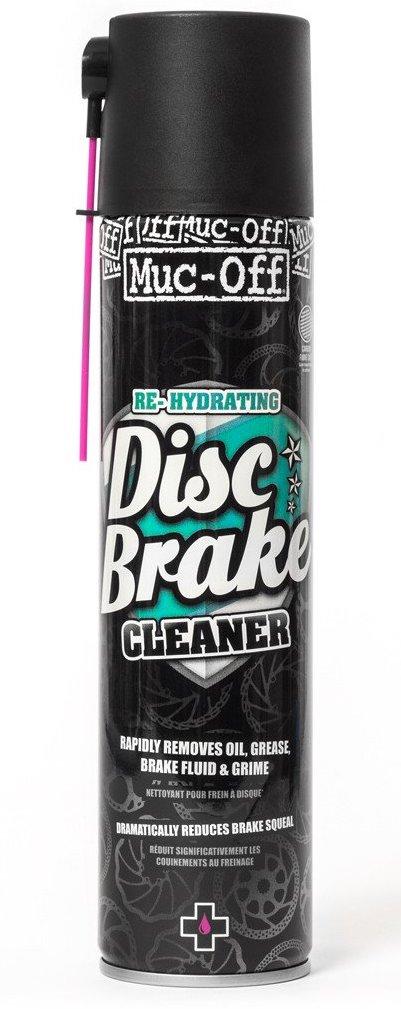
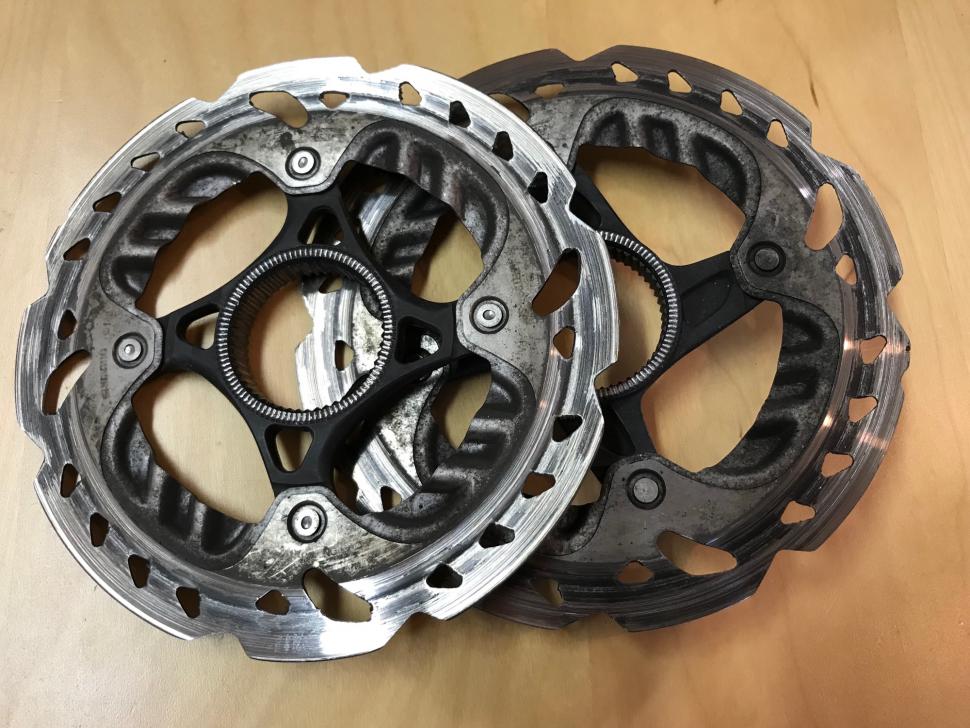
Add new comment
206 comments
Bornagainst, sorry to muddy this shitstorm with some simple, factual info that might help you out. The Shimano BR-R785 (https://bike.shimano.com/en-EU/product/component/ultegra-6870-di2/BR-R78...) is the bastard child of the range. Not really aligned with any groupset level (although they currently awkwardly group it in with Utelgra on their site), it's an XT or XTR post-mount caliper labeled as a road caliper. It has, and hopefully will continue to, run alongside the road flat mount calipers as an option for those running road bikes with post mounts. I have a Focus Cayo disc from about 2016 or 2017, which was among the first of that type to have discs, and got on board with post mounts before flat mounts were developed. I run them with 8070 di2, and used them with 505 mechanical shift levers before that and they work fine. As Monkey Puzle said, they're all compatible.
Bornagainst, sorry to muddy this shitstorm with some simple, factual info that might help you out. The Shimano BR-R785 (https://bike.shimano.com/en-EU/product/component/ultegra-6870-di2/BR-R78...) is the bastard child of the range. Not really aligned with any groupset level (although they currently awkwardly group it in with Utelgra on their site), it's an XT or XTR post-mount caliper labeled as a road caliper. It has, and hopefully will continue to, run alongside the road flat mount calipers as an option for those running road bikes with post mounts. I have a Focus Cayo disc from about 2016 or 2017, which was among the first of that type to have discs, and got on board with post mounts before flat mounts were developed. I run them with 8070 di2, and used them with 505 mechanical shift levers before that and they work fine. As Monkey Puzle said, they're all compatible.
Sounds like you possibly are
I must be doing something very, very wrong. Last year I wore out the rims on my rim braked commuter wheels after two years of use, same for the set before that. I have a set of rotors (and Avid BB calipers) from 2002 on one of my mountainbikes that show no signs of wear.
The point is, you wear out 10 disc rotors at least within a lifetime of an alloy rim.
That is an exaggeration of epic proportion. I have bikes that are 8 years old, done thousands of miles and still on the original discs. I've been through several sets of pads. I only change the rotors if they squeal alot. But i've found the reason for this now so havent changed rotors in years.
Bigger discs allow more braking power and bigger pads with bigger discs allow even more stopping power.
I agree with you. It is a laughable suggestion that rotors wear out 10x quicker than brake rims. Bigger rotors? Correct too.
One of my ‘justifications’ for a new winter disc bike was the cost of a set of wheels every winter. Maybe some people don’t ride outside in the winter? I was a diligent brake pad scrubber (lol) & swarf remover & still ate a set of rims every year.
I’ve spent a lot of time riding in West & North Yorkshire. Time was (on rim brakes) that the 25% downhills instilled fear. In the wet, near terror! Disc brakes have changed that. I now enjoy the mad downhills as much as the insane uphills. There’s a lot of famous climbs around here. Infamous descents too! Discs have transformed my descending. More confidence, better lines, more enjoyment, better times. Top 10 times. KoM times. (Sorry, bragging)
Yeah, everybody stick to rim brakes. Fewer ‘Uh-oh’ messages for me.
Damn right, rim brakes are more durable thats why every vehicle larger, heavier and faster than a peddle bikes uses them!
Motorbike brake rotors generally last the lifetime of a bike without changing (100,000 miles) and see duty cycles vastly more harsh than a peddle bike. They aren't that much larger either.
This guy gets it
Nah, his opinion just aligns with yours and he uses the same standard of evidence to make his point.
Discs or rim? I use both and have manifestly not been killed to death by using rim brakes for many years. Though my experience is limited to shimano only, neither give me any issues in terms of maintenance. Running costs of either are trivial in the grand scheme of things.
Whilst I much prefer the braking characteristics of disc brakes and if performance was the only criteria then they would win hands down but if I were building a traditional straight tubed steel bike then I'd probably go rim for the traditional look. For the more organic curves of a composite carbon frame I prefer the more modern look of discs. For carbon rim wheels, I'd sooner clean my eyeballs with jif than use rim brakes.
mjvande posts this very same cut and paste crap from time to time. I hope he / she takes as much effort to combat the absolute threats to the environment enacted by the current U.S president.
"Bicycles should not be allowed in any natural area. "
I was reading this load of tripe thinking that when I got to the end it would be revealed as some sort of joke post. But no, this person seems to be serious.
I could use the same argument to say that roads should not be allowed, cars should not be allowed, any form if industrialisation shouldnt be allowed and we should all live by subsistence farming with a life expectancy of 20-30 years because we can't have medical care.
The word than came to mind was Luddite!
Bigger discs WILL give you more braking power.. that's immutable.
Disc rotors don’t last as long as rims, do you’ll have to change your rotors quite a few times beforemeeting the same mileage as a wheel rim. Roughly 8 times by most calculations. Plus the pads wear faster. And cost more. A Mavic open pro will cost about 40 quid, plus 25 to build it, for about 30/40,000km if you keep things clean. Those rotor and pad replacements could add up to a grand for a pair of wheels in that time, but YMMV obviously
On road bikes the pads don't wear faster and certainly don't cost more - I think you are making this stuff up.
What's your on road disc brake pad/rotor wear rate? discs do get hammered more because riders do go into corners/braking zones with higher speeds or later braking because of the thinking they are more powerful (but ignore that the limits are down to tyres) so they do get worn more on average like for like, but if you have rotors that last 20,000 miles that would be a very interesting set of rotors you've got.
My daily commuter will get about 2500 miles between pads, there's an awful lot of stop start in that including braking from 30+mph every day. The pads I buy are Fibrax for the most part (genuine not fake crap), the last road brake ones I bought (Ritchey branded Fibrax) were £5.20 for eight pairs, the v brake pads were 10 pair for £5.15, how many branded disc pads can you get for that and how long do they last?
U Wot M8?
Either racers with disk brake can brake later and harder, from higher speed, or they are no benefit. Which is it? You can’t have it both ways. Or are you suggesting that racers with disk brakes are overshooting every corner?
But I’m guessing your facts come from the same place you get your brake pads for £5 for 10. Thin air.
Ive used Clarks VRS 811s as pads in the past,though it looks like Ill have to pick an equiv brand to replace them as they dont seem that available any more but I paid no more than £10 for them & in 5 years of riding in all conditions, its a winter and summer bike, only replaced the front pads once in that time, they dont squeal & the rotor is still looking decent for at least another couple of years at its current wear rate, its mechanical disc though, so Im sure hydraulic is a different experience entirely.
but I paid no more than £10 for them & in 5 years of riding in all conditions, its a winter and summer bike, only replaced the front pads once in that time, they dont squeal & the rotor is still looking decent for at least another couple of years at its current wear rate, its mechanical disc though, so Im sure hydraulic is a different experience entirely.
whilst my commuter bike is rim brakes, I use Avid wrangler, roughly the same cost though it varies more as sometimes its simpler to buy the whole cartridge,others just the pad insert. but in similar length of time and certainly Id have said less mileage overall, Im probably on my 4th or 5th set of brake blocks front and back, and Im starting to feel uneasy about the rim wear and looking at considering a new set of wheels this year. most weeks in winter I feel Im lucky if I havent had to dig some lump of aluminium pick up out of the blocks.
my next commuter bike will be disc brakes no question, in fact I even looked at converting my current commuter bike, but it looks too much hassle
Where are you getting this data from?
Nick, pretty much every single point you’ve tried to make is provably incorrect. So much so, I suspect you have never actually ridden a disc-braked bike. Anyone considering discs: go for it. The bonuses from mile one far, far outweigh any issues. Life’s too short to argue this, enough rim-braked retro willy-waving here folks.
[/quote]
Nick, pretty much every single point you’ve tried to make is provably incorrect. So much so, I suspect you have never actually ridden a disc-braked bike. Anyone considering discs: go for it. The bonuses from mile one far, far outweigh any issues. Life’s too short to argue this, enough rim-braked retro willy-waving here folks.
[/quote]
I'd say it's pretty much willy-waving from both camps to be fair. I have both rim-braked and daix-braked bikes, both work, both are great. The squeal fron wet rotors is quite off pissing but not the end of the world.
Dunno what you're smoking but get me a bag will you.
it’s false claims like this that other people looking for advice may read as legit.
I’m in Vancouver BC and round trip commute is 35kms 4 days a week; sintered pads on 160mm rotors front and rear; trp spyres + compressionless housing. That bike sees at least 5000kms per year in all weather and winters are non stop rain for 5 months. The rear rotor has at least 20000kms on it. I’ve no doubt it should probably be replaced, but since it works fine it stays.
The front probably has same but I’ll be hyper conservative and say it has 15000kms on it.
There is is no way you have to replace rotors as often as you claim and no idea why you’d bother saying as much
My mtn bike is a 2014. Front rotor is original and rear was replaced due to irreparable crash damage.
Another thing that wasn't mentioned, the extra cost of Disc brake bikes, especially if you're building a bike from scratch.
Rim brake Ultegra and Disc 105 groupsets are roughly the same cost (According to Vanilla Bikes Ultegra is £40 cheaper). Ultegra is also half a kilo lighter along with the performance benefits. If cost comes into consideration then you can't compare Ultegra rim brake with Ultegra disc, for example.
Add to that, disc frames are often more expensive and also heavier.
I was lucky, managed to grab a 2009/10 NOS boxed Specialized Sirrus Carbon Ltd, as gravel bikes go it's pretty damn perfect and has standard guard and rack mounts to boot as well as a carbon layup as used on specialized World Cup winning downhill mountain bikes. My '07 Globe Pro will take 55mm tyres, something many modern gravel disc bikes can't manage.
It wouldn't be a road.cc thread without this tired old tale being brought out for airing. This, discs, has a helmet been mentioned yet?
And yet you repeat your tired old trope with zero point to it.
My point of mentioning what I have with respect to the frame is that there are frames still out there to be had that don't need discs, can and do take wider tyres than many so called 'gravel' bikes AND importantly can take standard racks and guards so are multi function without the need for speciality accessories that readers here have mentioned frequently when trying to get bits to fit/work on 'modern' disc frames.
They also cost significantly less than their bloated/overweight disc counterpart.
Keep on whining, it's entertaining to see that you can only throw boring old crap with no point into a useful discussion.
You'll have to point out the "useful discussion" bit as this thread is an utter train wreck full of BS opinions and made up "facts" based upon beliefs.
And how the fuck did you get to the subject of seatbelts?! Did you see "seat" and "car" then just come up with something that you thought fitted? I have missed your utter stupidity.
I’ve just built a gravel bike, the new stuff only really comes disc ready which was fine for me - I fancied a go at building a hydro disc system anyway so it scratched a few itches. Other bikes in the stable are all rim brake, mostly carbon rims - it depends on your rims and pads but honestly I can’t feel the stopping power any stronger or more modular with Potenza discs over Bora rims with Campy’s carbon pads in the dry. Marginally less modulation, if anything. I’ve no doubt they provide better stopping in the wet, but like anyone else I adjust my riding for wet conditions same as when driving a car - rubber on wet tarmac is my biggest concern, I’ve never been left wanting with brakes on carbon rims.
People talk about rim wear, but I just can’t seem to wear out carbon rims with the correct pads. Alloy rims wear out obviously, but they’re cheap - probably as cheap as replacing a disc rotor.
I hate random noises on my bikes, I put a lot of effort into fettling my bikes into smooth shifting, silent machines. Smash through some mud and wet on discs, or ride in the rain, and you’ve got the sound of grit on metal until the bastard things dry off, plus the squeals, plus the constant worry about caliper alignment. It’ll be a dark day when bike manufacturers finally force us all into discs
My last purchase of disc rotors cost £22 for two. Please show me where to buy two new rims with a complete rebuild of the wheels for this price. Silly statement.
Pages